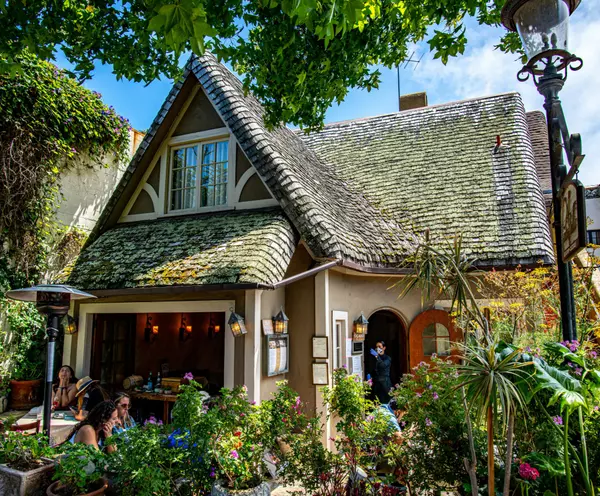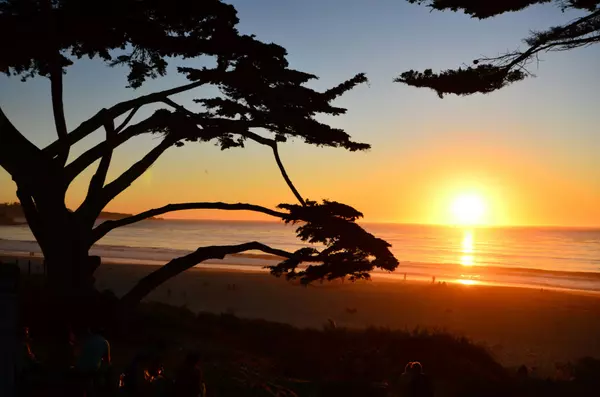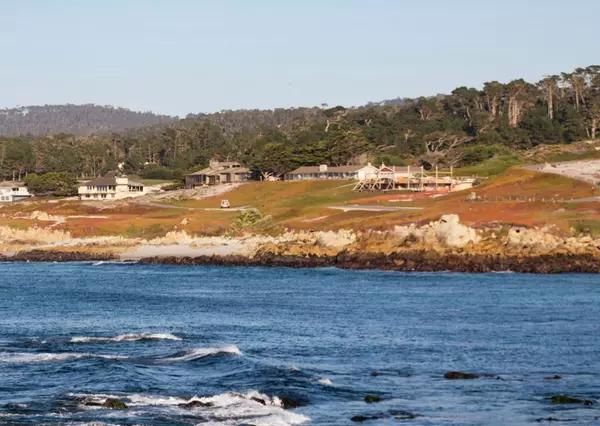What’s With All the Name Plaques on PG Houses? What to Know Before Buying a Historic Home in Pacific Grove

What’s With All the Name Plaques on PG Houses? What to Know Before Buying a Historic Home in Pacific Grove
Walk the streets of Pacific Grove and you’ll start to notice that nearly every block has at least one cottage with a small rectangular plaque by the front door, engraved with a name and a year: Mrs. C.P. Huntoon 1891. Mrs. B.L. Hollenbeck 1888. You know the ones.
This is a Monterey Peninsula community that takes its history very seriously. Pacific Grove has one of the highest concentrations of preserved 19th-century homes in California, many still owned by people who view themselves not only as homeowners, but as stewards of local history. Those plaques, small as they are, mark that distinction.
If you’re thinking about buying a historic home in Pacific Grove, understanding what those plaques mean (and what they imply about maintenance, permits, and property value) is essential. The charm of these homes runs deeper than their architecture. These structures are woven into the character of the town itself, and that comes with both privileges and responsibilities.
Below, we’ll unpack what those plaques signify, how Pacific Grove’s historic preservation system works, and what you should know before buying one of these cherished homes in "America's Last Hometown."
A Town Built on History
Pacific Grove’s architectural character didn’t happen by accident. Founded in the 1870s as a Methodist retreat, the town grew quickly through the late 19th and early 20th centuries. Early residents built modest, wood-framed cottages that were simple, sturdy, and close together. Many of those homes remain intact today.
Over time, Pacific Grove’s commitment to preservation became part of its identity. The city has a Historic Resources Inventory (HRI), a catalog of properties deemed architecturally or historically significant. Many homes you see with plaques are listed on the HRI. To qualify, a property must be at least fifty years old and retain enough of its original design to convey its historic value.
The plaque isn’t given to anyone. It’s awarded after a detailed review process, often involving research into the home’s history, architecture, and former residents. Once approved, the owner can order a bronze or wooden plaque that identifies the house and the year it was built. It’s both a point of pride and a mark of authenticity — proof that the home is recognized as part of Pacific Grove’s living heritage.
What the Plaque Really Means
In practice, having a historic plaque doesn’t necessarily impose strict legal restrictions, but it does signal that the property is under the city’s preservation umbrella. If the home is listed on the HRI, changes to the exterior — like new windows, siding, or additions — typically require city review and approval.
For buyers, this means it’s important to understand the difference between owning an “old home” and owning an officially recognized historic home. Many older properties in Pacific Grove were built before 1940 but aren’t on the HRI. Those homes can usually be remodeled or expanded more freely. Homes with plaques, however, are subject to specific preservation guidelines.
The goal isn’t to trap owners, but to ensure that any updates respect the property’s architectural integrity. If you want to replace a deteriorating porch or update a façade, you’ll likely need to work with the city’s Community Development Department to ensure your plans align with historic standards.
Buyers should also know that historic status can come with benefits. Pacific Grove participates in the Mills Act program, a California law that allows owners of qualifying historic properties to receive significant property tax reductions in exchange for maintaining and preserving their home. Those savings can offset higher maintenance costs over time.
The Real Costs and Rewards of Preservation
Owning a historic home in Pacific Grove is both a privilege and a commitment. The charm that draws buyers to these properties often comes from details that require specialized care: wood-framed windows, original siding, vintage hardware, and irregular floor plans that reflect a different era of craftsmanship.
Renovations can cost more because they often require materials or methods consistent with the home’s period style. For example, replacing wood windows with vinyl is typically discouraged, while repairing or replicating the originals is encouraged. Skilled contractors familiar with historic restoration can be harder to find and more expensive to hire.
That said, the pride of ownership runs deep here. For many residents, maintaining a historic home feels like an act of continuity — a way to honor the generations who built the town and preserve its atmosphere for those who’ll come next.
Financially, the appeal of Pacific Grove’s historic housing stock also translates to stability. Buyers tend to hold onto these homes longer, and demand remains strong. Even small cottages near downtown or the Asilomar area command competitive prices because they’re irreplaceable. You can build a new house anywhere, but you can’t replicate the craftsmanship or the story of a 19th-century PG cottage.
How to Approach Buying a Historic Home in PG
If you’re drawn to these properties, approach the process with both enthusiasm and patience. Start by working with a local agent who understands Pacific Grove’s historic framework — someone who can help you interpret title reports, property records, and city designations.
During inspections, look beyond cosmetic issues. Foundation integrity, electrical systems, plumbing, and roof structure are often more relevant than aesthetic wear. Many of these homes predate modern building codes, and upgrades may have been done piecemeal over time. A thorough inspection by professionals familiar with older homes is critical.
If the home is listed on the HRI or eligible for Mills Act consideration, ask to review any existing preservation agreements or prior permit records. The city’s website offers public access to property files and resources explaining the review process for historic properties.
One of the most valuable things you can do early on is to schedule a consultation with the City of Pacific Grove’s Historic Preservation Officer. They can clarify what is and isn’t possible under current guidelines and help you anticipate what a future remodel might require.
Buyers sometimes worry that restrictions will limit their creativity, but in reality, they often guide it. The process encourages thoughtful design, with updates that harmonize with the original structure rather than overwhelm it. Many of Pacific Grove’s most beautiful restorations came from owners who embraced those constraints as opportunities.
Living With Character, Not Just History
Historic homes tend to attract a particular type of homeowner: people who appreciate craftsmanship, story, and individuality. The houses in Pacific Grove are rarely large, but they’re full of small quirks and intimate spaces. The homes with names on them were built with care, often by hand. And each holds layers of memory.
Living in a historic home also connects you to the community in a way that’s hard to quantify. Pacific Grove’s preservation culture is strong because residents care deeply about maintaining the town’s character. Homeowners share advice, recommend trusted craftspeople, and sometimes even trade salvaged materials to help each other maintain period authenticity.
That spirit of care contributes to the town’s cohesiveness. Walk through the neighborhoods near Lighthouse Avenue or Central, and you’ll see homeowners repainting trim to match original colors, or restoring delicate fretwork instead of replacing it. True stewardship in action.
The Ruiz Group’s Perspective
At The Ruiz Group, we’ve helped clients navigate Pacific Grove’s historic home market for years. We’ve seen what makes these properties special, but we also understand the complexities that come with them. Our goal is to help buyers make decisions that honor both the home’s legacy and their own lifestyle.
That means more than finding the right property. It means guiding you through due diligence, connecting you with the right local experts, and helping you plan for ownership that’s both practical and rewarding. We know which neighborhoods have the richest history, which blocks are part of preservation districts, and which homes may soon qualify for recognition.
Buying a historic home is as much an emotional decision as a financial one. You’re inheriting a small piece of the Monterey Peninsula’s story.
A Final Word on Legacy
When you pass by a plaque in Pacific Grove, you’re seeing more than a name. You’re seeing decades of care, adaptation, and quiet endurance. These homes have survived salt air, fog, and the changing tides of California’s coastal economy. They’ve been modernized, restored, and reimagined, yet they still hold their original spirit.
For buyers who want a home that means something — one with texture, story, and permanence — Pacific Grove offers an unmatched opportunity. Owning a historic home here isn’t about nostalgia. It’s about continuity. It’s about belonging to a community that values history as a living part of daily life.
And if you decide to join that story, the plaque on your wall won’t just mark a house. It will mark your place in the long, ongoing narrative of Pacific Grove itself.
Categories
Recent Posts










GET MORE INFORMATION

